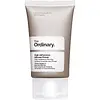What's inside
What's inside
 Key Ingredients
Key Ingredients

 Benefits
Benefits

 Concerns
Concerns

 Ingredients Side-by-side
Ingredients Side-by-side

Water
Skin ConditioningIsodecyl Neopentanoate
EmollientDimethicone
EmollientDimethicone/Bis-Isobutyl PPG-20 Crosspolymer
EmollientHydroxyethyl Acrylate/Sodium Acryloyldimethyl Taurate Copolymer
Emulsion StabilisingWater, Isodecyl Neopentanoate, Dimethicone, Dimethicone/Bis-Isobutyl PPG-20 Crosspolymer, Hydroxyethyl Acrylate/Sodium Acryloyldimethyl Taurate Copolymer, Isohexadecane, Phenethyl Disiloxane, Isoceteth-20, Polysilicone-11, Tocopherol, Polysorbate 60, Trisodium Ethylenediamine Disuccinate, Phenoxyethanol, Chlorphenesin
Water
Skin ConditioningIsododecane
EmollientCyclopentasiloxane
EmollientPhenyl Trimethicone
Skin ConditioningCyclohexasiloxane
EmollientDimethicone
EmollientEthylhexyl Palmitate
EmollientGlycerin
HumectantCetyl PEG/PPG-10/1 Dimethicone
EmulsifyingPEG-10 Dimethicone
Skin ConditioningPEG-9 Polydimethylsiloxyethyl Dimethicone
EmulsifyingDisteardimonium Hectorite
StabilisingLactococcus Ferment Lysate
Skin ConditioningPinus Pinaster Bark Extract
AntioxidantGlycyrrhiza Glabra Root Extract
BleachingCurcuma Longa Root Extract
MaskingSalvia Hispanica Seed Oil
MoisturisingLactic Acid
BufferingPropanediol
SolventTocopherol
AntioxidantTocopheryl Acetate
AntioxidantXanthan Gum
EmulsifyingCaprylic/Capric Triglyceride
MaskingCellulose Acetate
Docosahexaenoic Acid
Skin ConditioningEicosapentaenoic Acid
EmollientAcrylates/Ammonium Methacrylate Copolymer
Boron Nitride
AbsorbentEthylhexylglycerin
Skin ConditioningHdi/Trimethylol Hexyllactone Crosspolymer
Magnesium Stearate
Cosmetic ColorantMica
Cosmetic ColorantPhosphatidylcholine
EmulsifyingPhytosphingosine
Skin ConditioningPolyglyceryl-4 Isostearate
EmulsifyingPolymethylsilsesquioxane
Propylene Carbonate
SolventPropylene Glycol Stearate
Skin ConditioningSilica Silylate
EmollientSodium Benzoate
MaskingSodium Chloride
MaskingSorbitol
HumectantTetrasodium Glutamate Diacetate
Phenoxyethanol
PreservativeCI 77891
Cosmetic ColorantCI 77492
Cosmetic ColorantCI 77491
Cosmetic ColorantCI 77499
Cosmetic ColorantWater, Isododecane, Cyclopentasiloxane, Phenyl Trimethicone, Cyclohexasiloxane, Dimethicone, Ethylhexyl Palmitate, Glycerin, Cetyl PEG/PPG-10/1 Dimethicone, PEG-10 Dimethicone, PEG-9 Polydimethylsiloxyethyl Dimethicone, Disteardimonium Hectorite, Lactococcus Ferment Lysate, Pinus Pinaster Bark Extract, Glycyrrhiza Glabra Root Extract, Curcuma Longa Root Extract, Salvia Hispanica Seed Oil, Lactic Acid, Propanediol, Tocopherol, Tocopheryl Acetate, Xanthan Gum, Caprylic/Capric Triglyceride, Cellulose Acetate, Docosahexaenoic Acid, Eicosapentaenoic Acid, Acrylates/Ammonium Methacrylate Copolymer, Boron Nitride, Ethylhexylglycerin, Hdi/Trimethylol Hexyllactone Crosspolymer, Magnesium Stearate, Mica, Phosphatidylcholine, Phytosphingosine, Polyglyceryl-4 Isostearate, Polymethylsilsesquioxane, Propylene Carbonate, Propylene Glycol Stearate, Silica Silylate, Sodium Benzoate, Sodium Chloride, Sorbitol, Tetrasodium Glutamate Diacetate, Phenoxyethanol, CI 77891, CI 77492, CI 77491, CI 77499
 Reviews
Reviews

Ingredients Explained
These ingredients are found in both products.
Ingredients higher up in an ingredient list are typically present in a larger amount.
Dimethicone is a type of synthetic silicone created from natural materials such as quartz.
What it does:
Dimethicone comes in different viscosities:
Depending on the viscosity, dimethicone has different properties.
Ingredients lists don't always show which type is used, so we recommend reaching out to the brand if you have questions about the viscosity.
This ingredient is unlikely to cause irritation because it does not get absorbed into skin. However, people with silicone allergies should be careful about using this ingredient.
Note: Dimethicone may contribute to pilling. This is because it is not oil or water soluble, so pilling may occur when layered with products. When mixed with heavy oils in a formula, the outcome is also quite greasy.
Learn more about DimethiconePhenoxyethanol is a preservative that has germicide, antimicrobial, and aromatic properties. Studies show that phenoxyethanol can prevent microbial growth. By itself, it has a scent that is similar to that of a rose.
It's often used in formulations along with Caprylyl Glycol to preserve the shelf life of products.
Tocopherol (also known as Vitamin E) is a common antioxidant used to help protect the skin from free-radicals and strengthen the skin barrier. It's also fat soluble - this means our skin is great at absorbing it.
Vitamin E also helps keep your natural skin lipids healthy. Your lipid skin barrier naturally consists of lipids, ceramides, and fatty acids. Vitamin E offers extra protection for your skin’s lipid barrier, keeping your skin healthy and nourished.
Another benefit is a bit of UV protection. Vitamin E helps reduce the damage caused by UVB rays. (It should not replace your sunscreen). Combining it with Vitamin C can decrease sunburned cells and hyperpigmentation after UV exposure.
You might have noticed Vitamin E + C often paired together. This is because it is great at stabilizing Vitamin C. Using the two together helps increase the effectiveness of both ingredients.
There are often claims that Vitamin E can reduce/prevent scarring, but these claims haven't been confirmed by scientific research.
Learn more about TocopherolWater. It's the most common cosmetic ingredient of all. You'll usually see it at the top of ingredient lists, meaning that it makes up the largest part of the product.
So why is it so popular? Water most often acts as a solvent - this means that it helps dissolve other ingredients into the formulation.
You'll also recognize water as that liquid we all need to stay alive. If you see this, drink a glass of water. Stay hydrated!
Learn more about Water